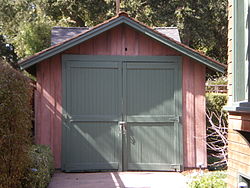
The rules of the garage are a set of eleven rules that Hewlett-Packard CEO Carly Fiorina used in 1999 to reinterpret the HP Way work ethos that Bill Hewlett and David Packard set when they founded Hewlett-Packard (HP). Fiorina felt that the traditional HP Way was too limiting in the modern corporate world, and that it needed to be updated. [1]
